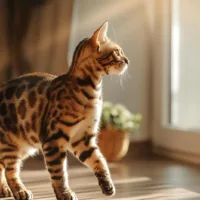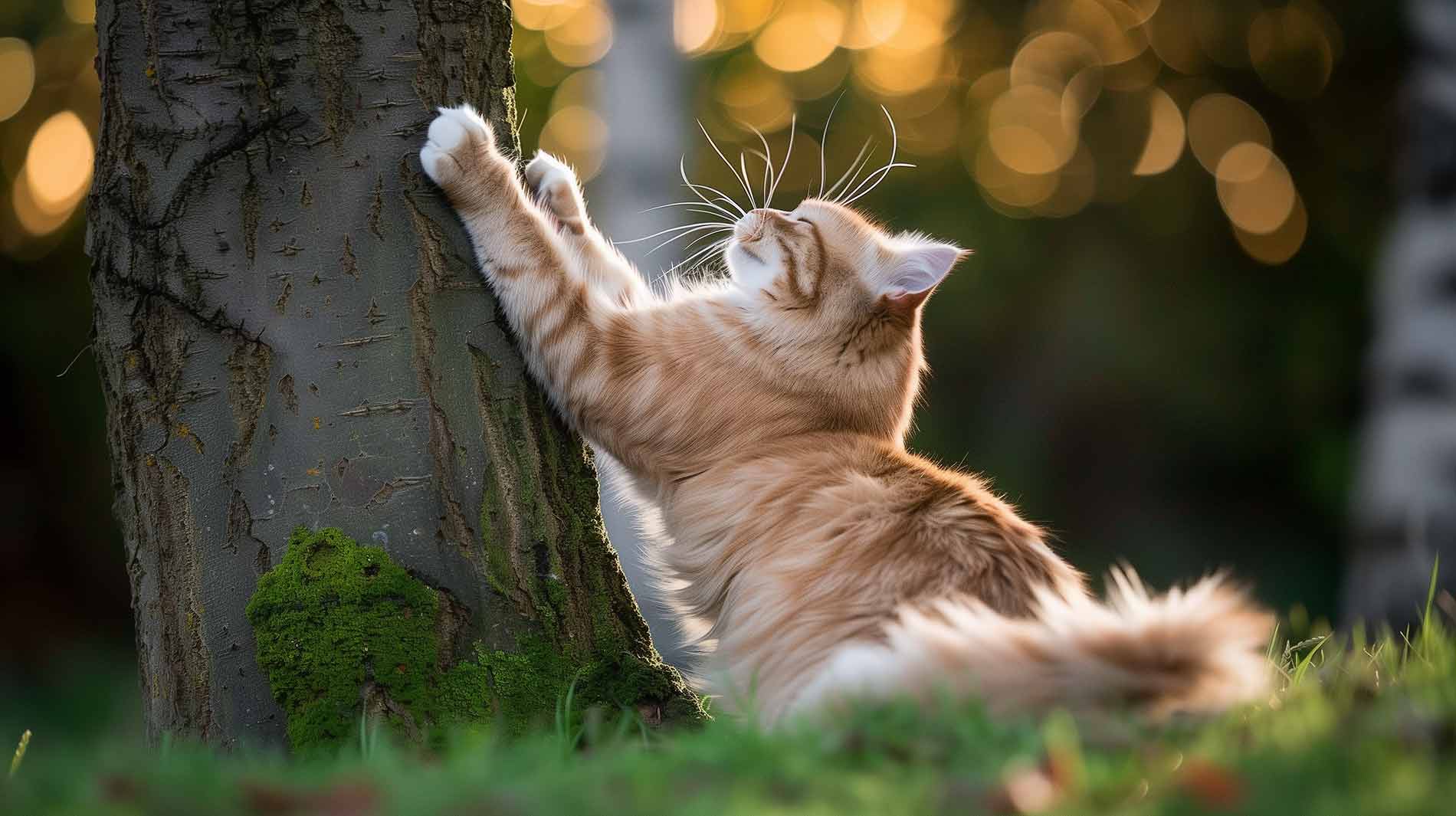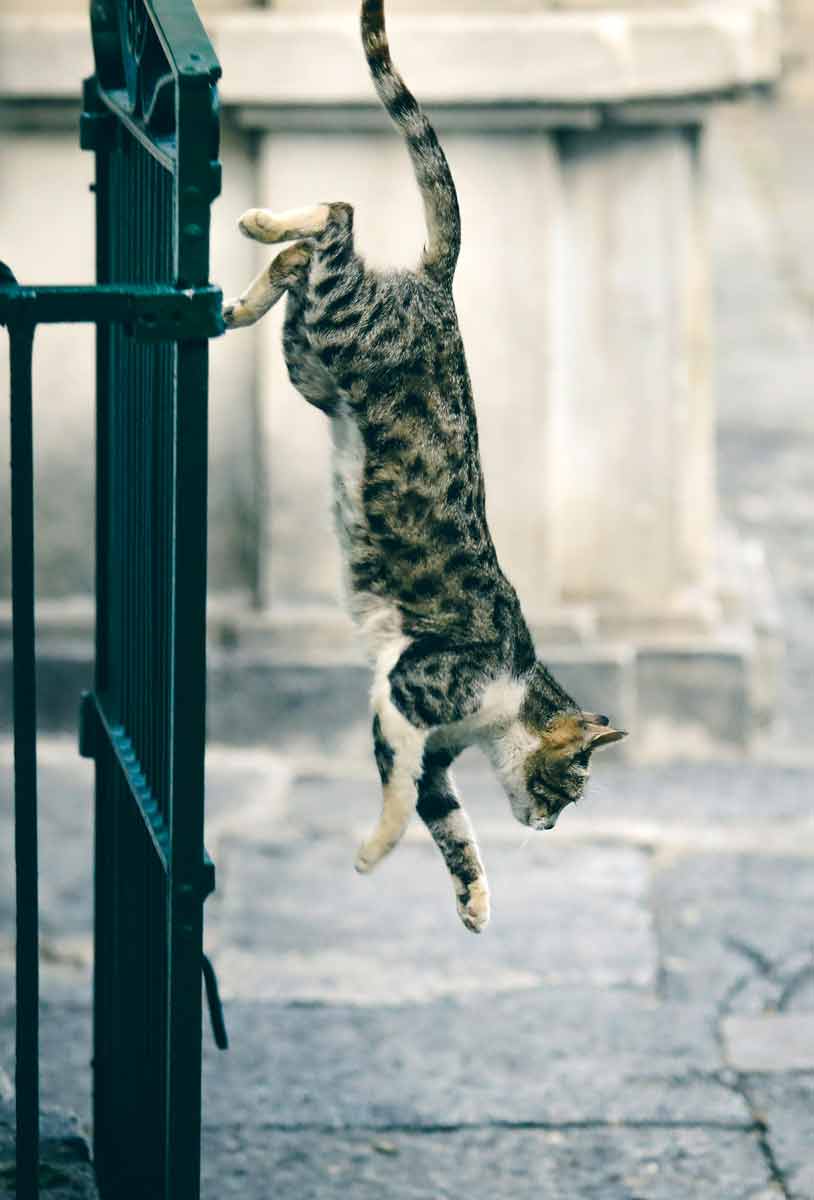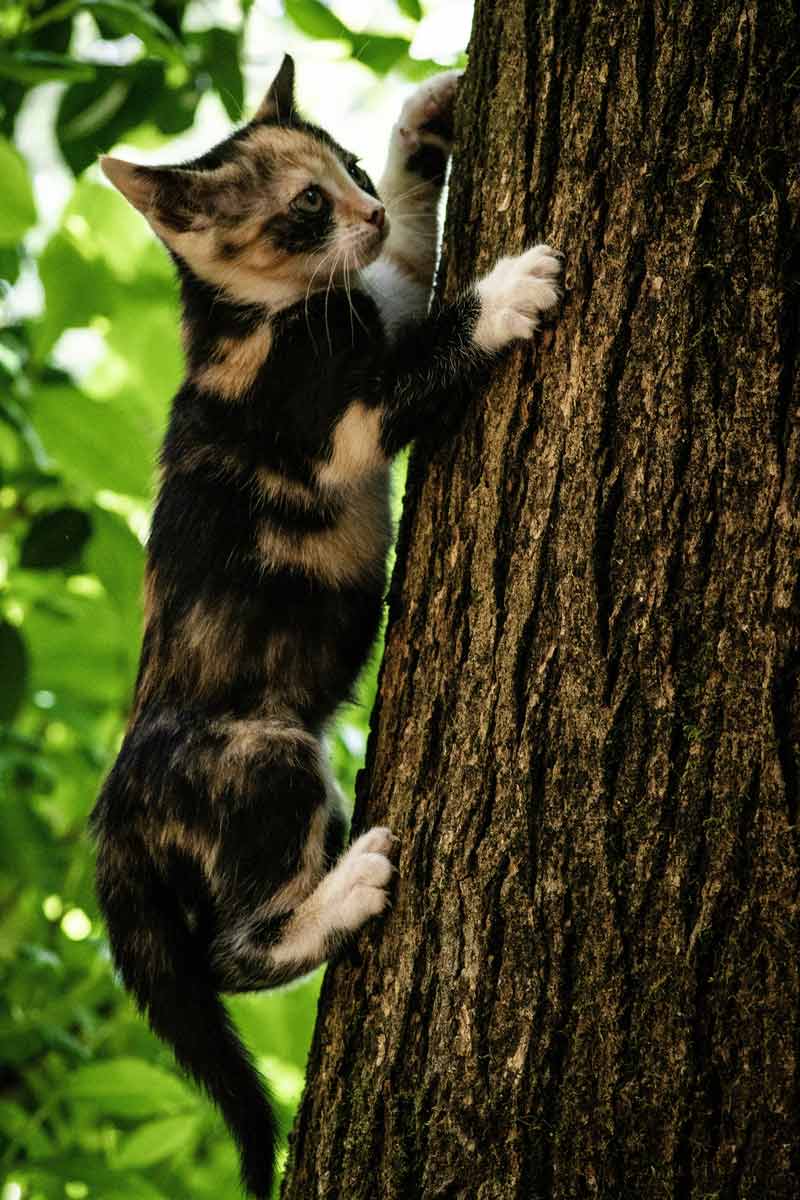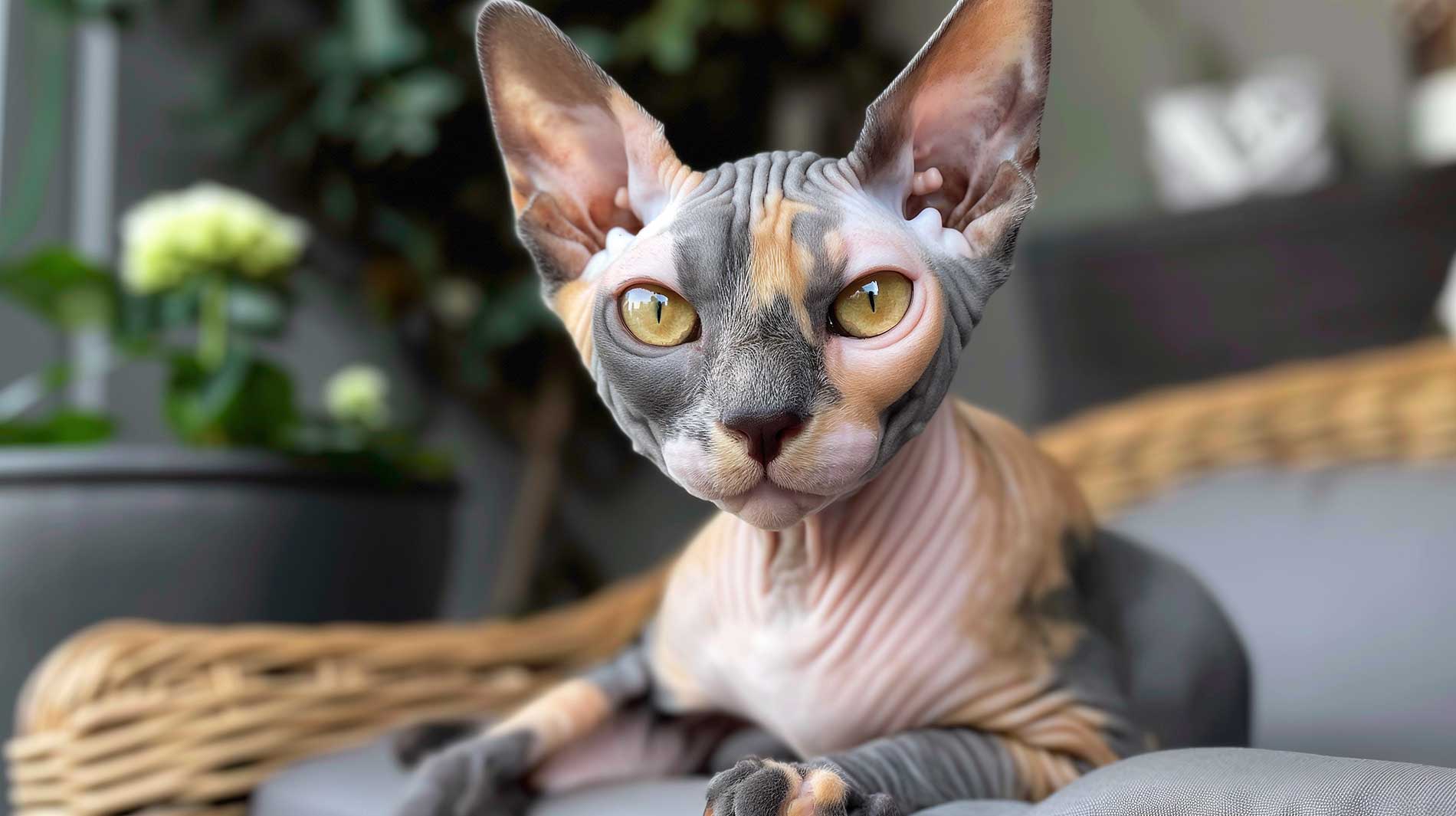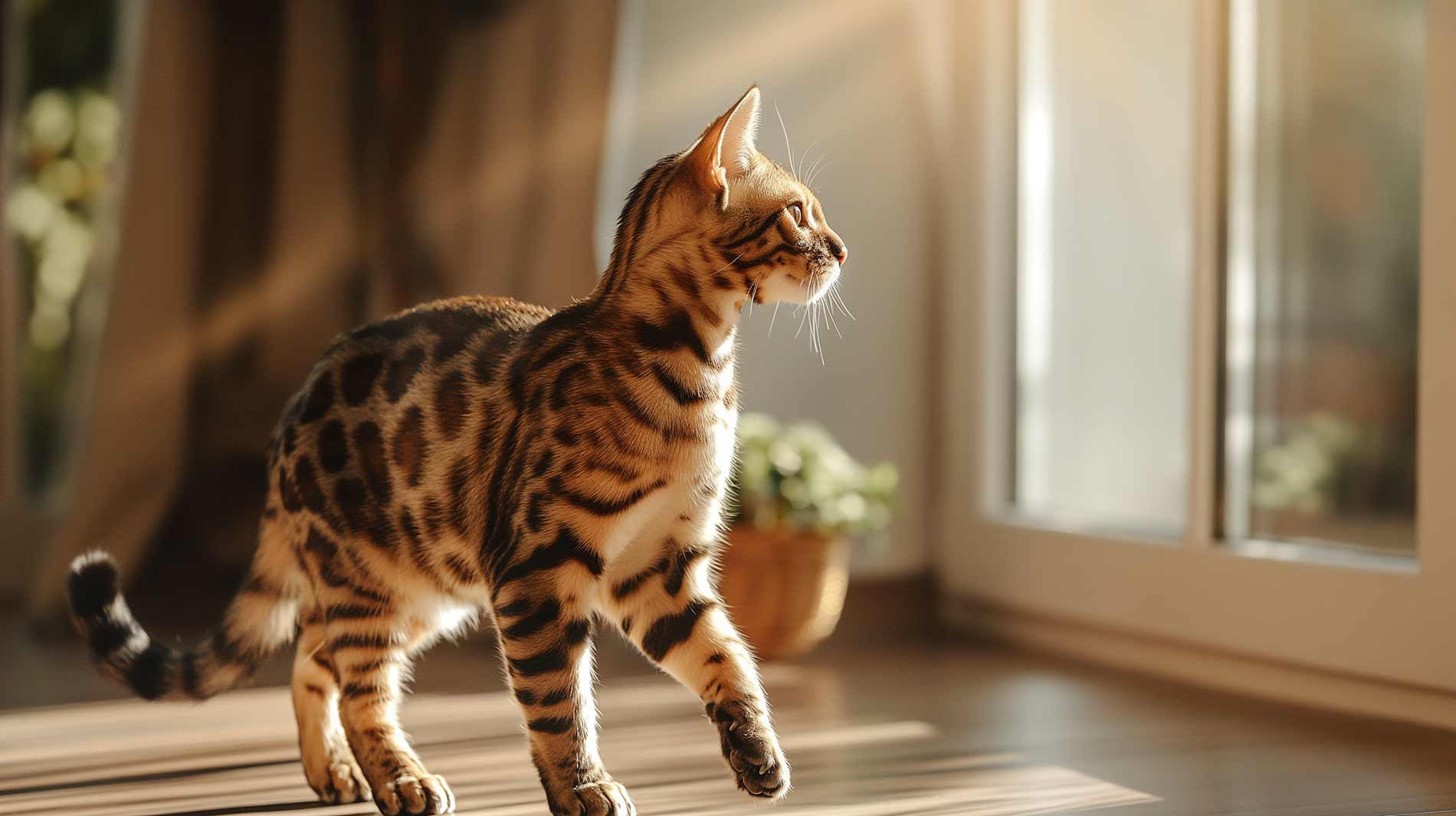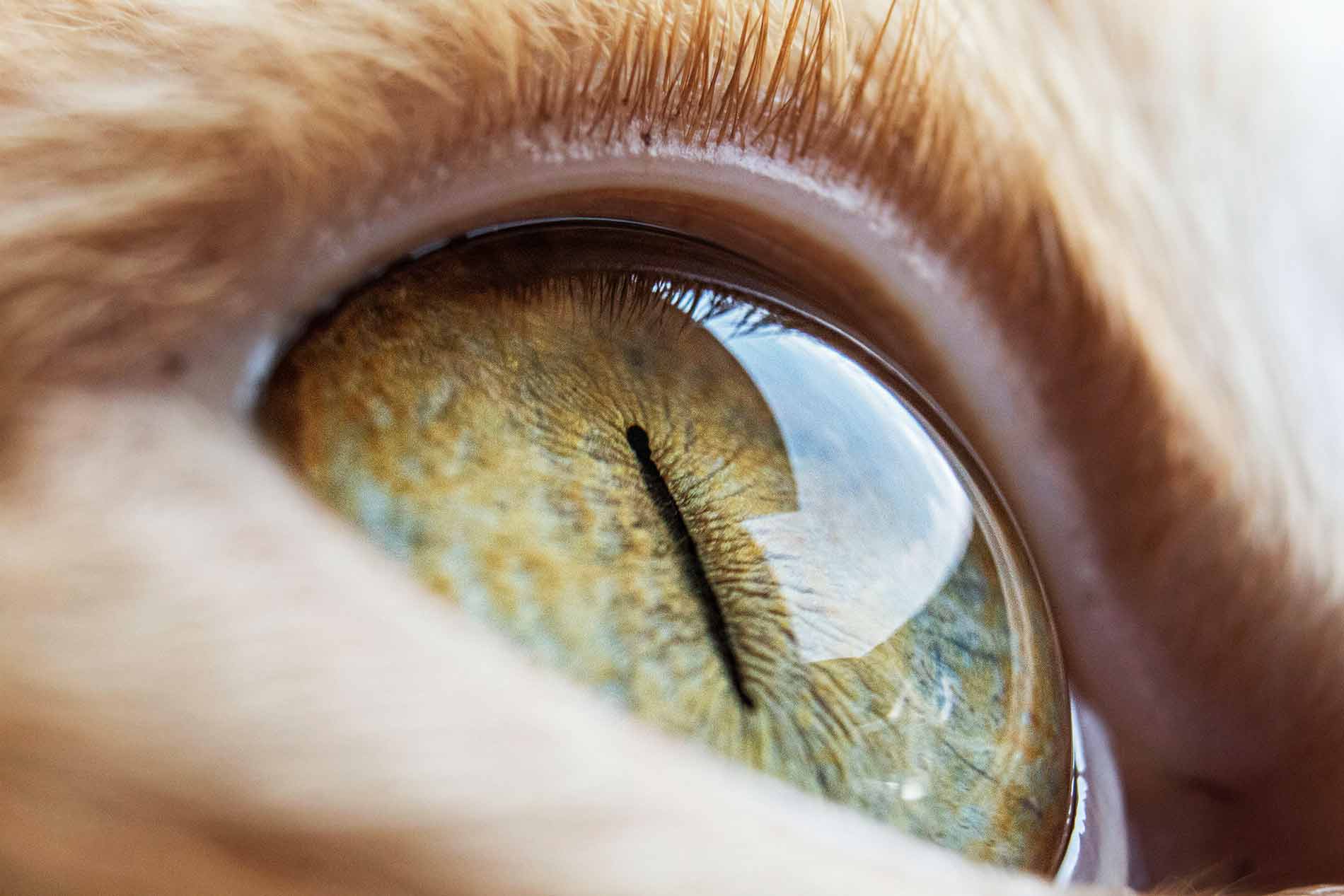Cats’ paws are not just tools for walking and jumping, they are crucial for sensing and capturing prey with lightning speed. They allow cats to jump higher than you can imagine, fend off other predators, and effortlessly scale vertical surfaces. We’re here to show you every intricate detail about the anatomy of cat paws and to teach you everything you wanted to know about these amazing paws and beans.
General anatomy of cat paws
- Pads: These are the soft parts of the paw that contact the ground, made up of the digital, metacarpal (forelimb), and metatarsal (hindlimb) pads. The carpal pad, found only on the forelimbs, helps provide additional traction.
- Claws: Cats typically retract their sharp claws, sheathing them when not in use to prevent wear and allow for silent stalking
- Fur: Unless we’re looking at a hairless breed, there’s fur around and between the toes and pads.
Detailed anatomy, functions and unique features of cat paws
The pads on a cat paw
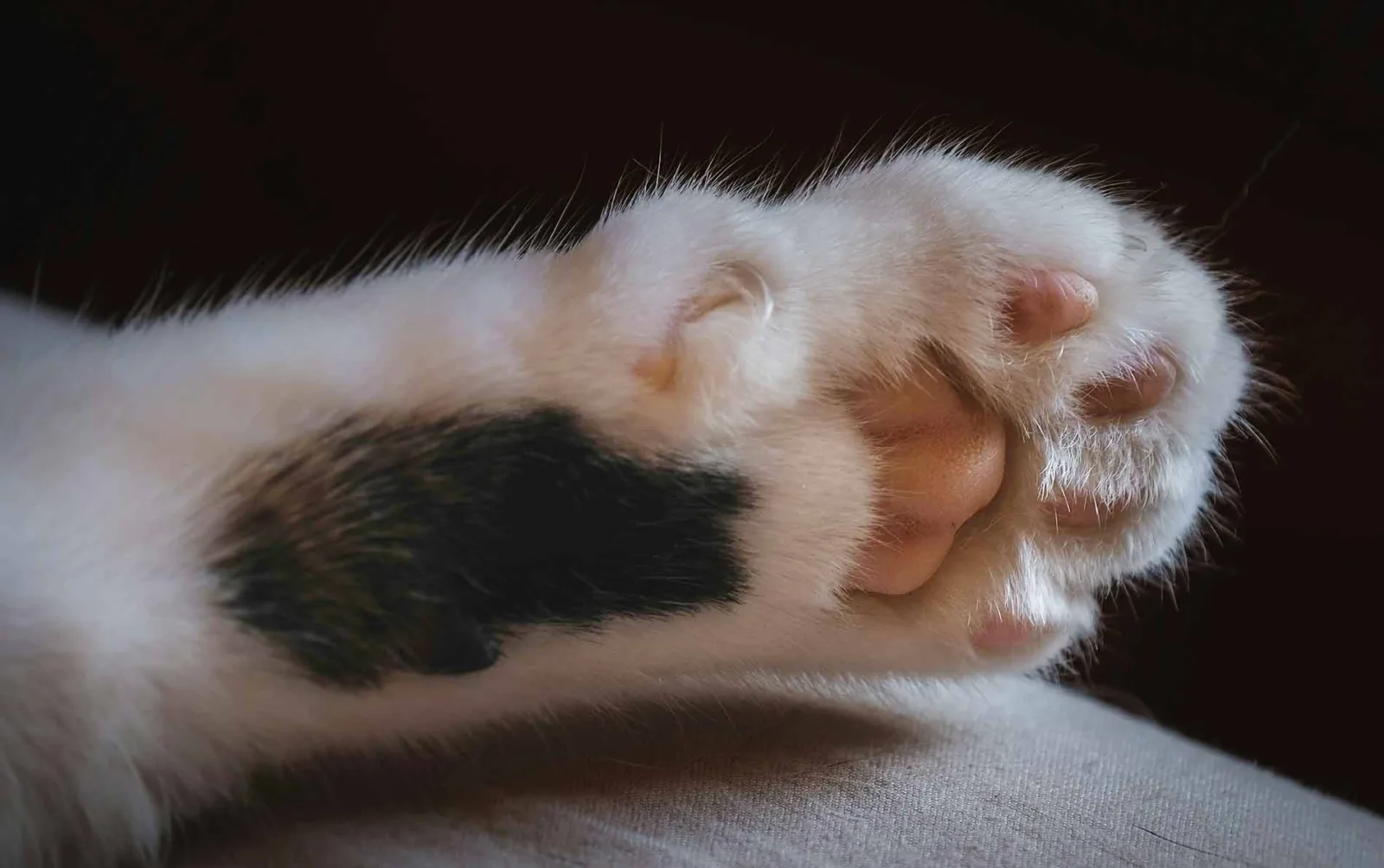
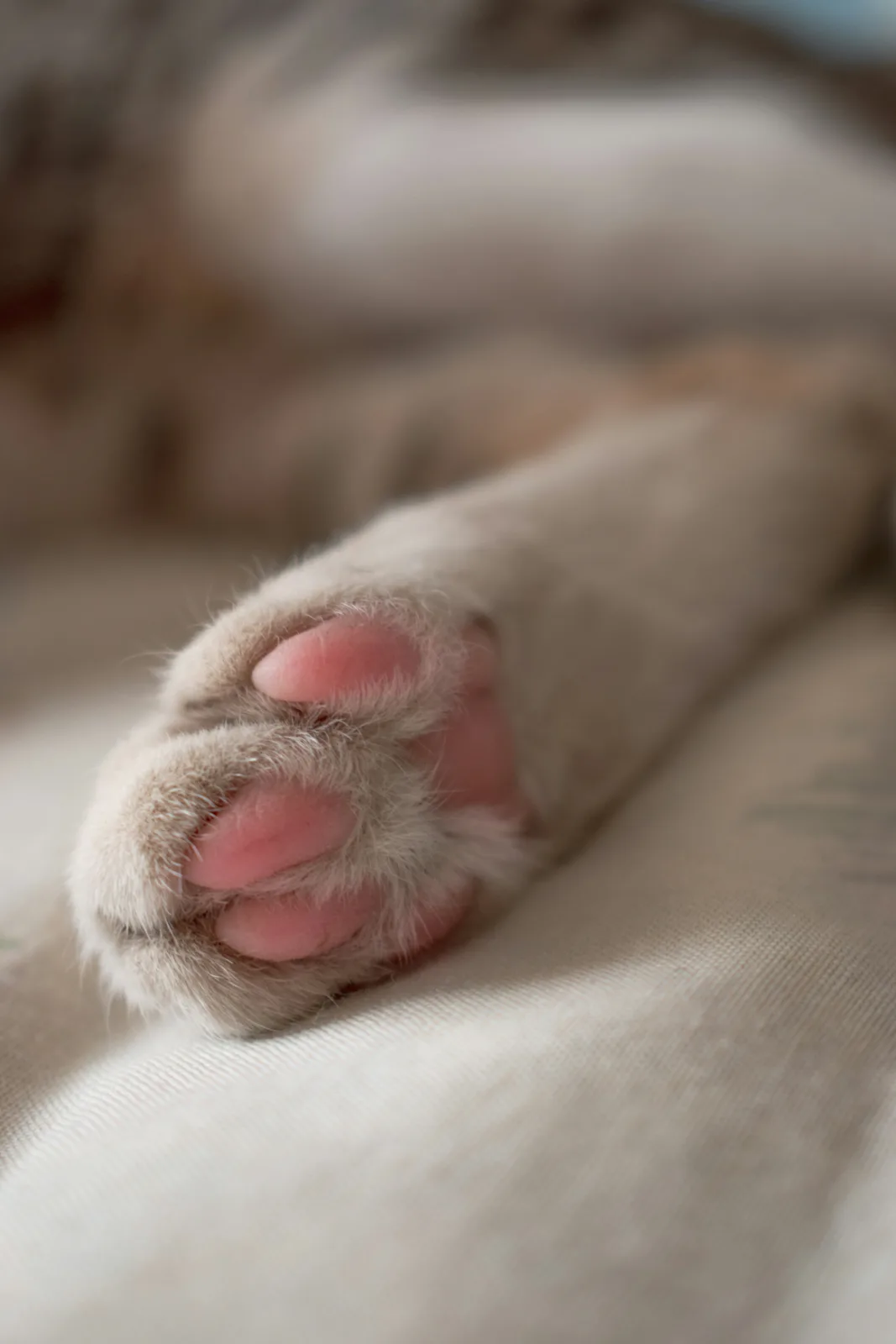
The pads of a cat’s paws serve several vital functions, including shock absorption during jumps and falls, providing traction on various surfaces, and protecting the delicate inner workings of the foot from damage. By the way, some cats have little horns growing out of their carpal pad (the highest pad on the forelimb), which is totally normal and no reason to worry.
Composition and texture
A thick, fatty tissue layer makes up the paw pads, and a pigmented skin layer, tough yet flexible, covers them. This composition allows them to absorb impacts and conform to different terrains.1
Claws
Properties and structure of cat claws
These are what turn their delicate paws into lethal weapons: razor-sharp, curved blades on each toe. A cat can retract its claw, pulling it back to hide within the paw when not in use. This ability is thanks to the unique structure of the bones in their toes. Cats have two crucial bones in their toes, the middle and distal phalanges (think of them as the finger bones), shaped in a way that allows the claw to retract smoothly.
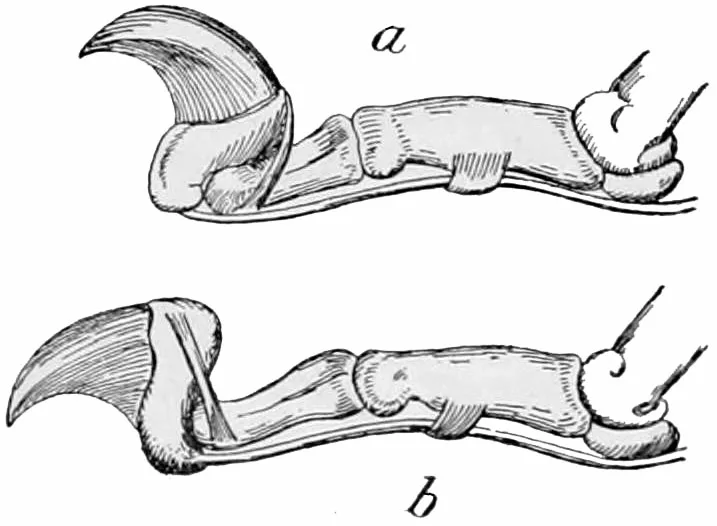
How cats retract and extend their claws
The actual retraction of a cat’s claws is not controlled by the typical movement muscles found in the arms. Instead, it is managed by durable, spring-like structures known as dorsal elastic ligaments.These ligaments pull the claw back passively, which means there is no muscle effort required. This mechanism allows the cat to keep its claws sharp and ready for action whenever needed. To extend their claws, cats use the tendon of the common toe extensor together with the deep flexor tendon. This action isn’t just a simple extension but a coordinated move that involves both pulling and pushing muscles at the same time.2
What cats use their claws for
Claws are essential for various behaviors including hunting, where they are used to catch and hold prey. During climbing, they hook into surfaces to provide grip. For self-defense they use their claws against predators or rivals. Removing cats’ claws, known as declawing, isn’t like taking out a nail – it involves amputating the tip of the toe. Please consider reading our article on why declawing is harmful if you are contemplating this procedure and if you want to learn why cats need their claws.
Cat paw bones and joints
A cat’s paw is composed of multiple bones including phalanges, metacarpals, and carpals. Phalanges are the toe bones, metacarpals are the mid-foot bones, and carpals are the wrist bones. These bones are interconnected by joints, which give the paw its flexibility. This flexibility allows the paw to compress during a leap and expand upon landing.
Flexibility and mobility
The unique design of a cat’s paw bones is enhanced by flexible joints and thick pads. These features allow cats to absorb significant impacts. They also enable cats to extend their reach. This maximizes the effectiveness of their jumps.
Structure and function of leg and paw muscles in cats
Cats’ paws and legs feature a complex arrangement of muscles that enhance their agility and precision in various activities. The flexor muscles under the paws and legs enable the retraction of claws to keep them sharp, while the extensor muscles on the top facilitate their extension for gripping during climbs. The interosseous muscles, located between the toe bones, allow for minute adjustments in paw posture, aiding in balance and stability.
These muscle groups collectively enhance a cat’s climbing proficiency. They enable efficient predatory actions, including quick sprints and sharp turns. Additionally, these muscles assist in thermal regulation by generating heat through activity. This muscular synergy highlights the cat’s ability to navigate and dominate its environment. It demonstrates the evolutionary finesse embodied in their anatomy.
Digitigrade locomotion – or why cats walk on tip-toes
Structure of cats’ locomotion
Cats are classified as digitigrade animals, which means they walk on their toes. This anatomical structure involves longer metacarpal, metatarsal, and phalangeal bones compared to plantigrade mammals like humans, who walk on the soles of their feet. Walking on their toes increases the length of each stride and enhances the elasticity of each step, which is facilitated by the unique alignment of their leg bones.
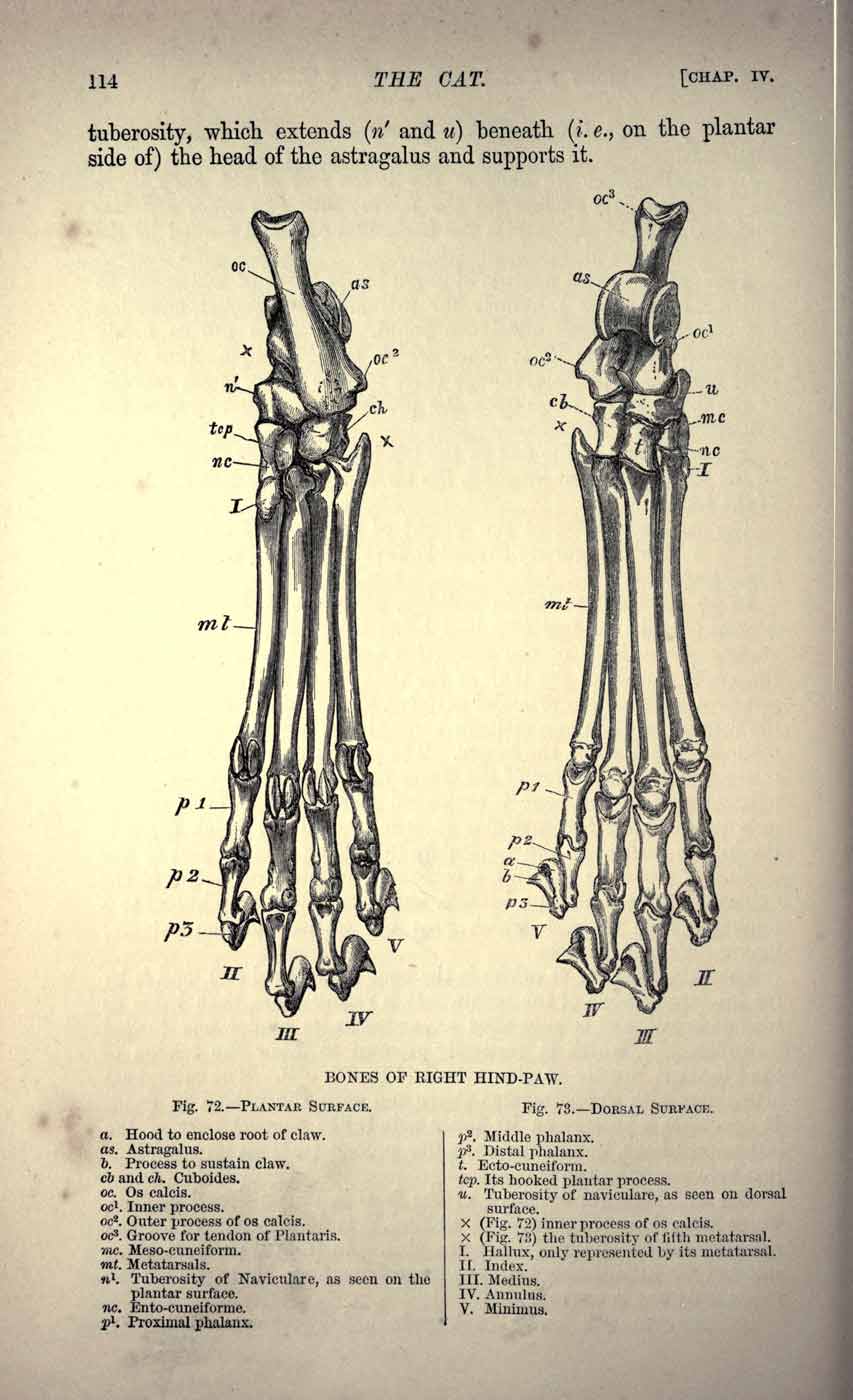
Usage of cats’ digitigrade walk
The primary advantage of digitigrade locomotion is the increase in speed and stealth it provides. By walking on their toes, cats can move more quietly, making it easier to sneak up on prey. This posture also allows for greater extension and flexion of the limbs, contributing to a cat’s remarkable ability to leap and land with precision. The elevated stance provided by tip-toe walking also contributes to better distribution of their weight, allowing for agile and effective maneuvering through various terrains.
Soft webbing between the toes
While not as pronounced as those found in aquatic animals, the webbing between a cat’s toes is a subtle yet distinctive anatomical feature. This webbing consists of thin, flexible skin membranes that connect each of the digits on a cat’s paws. It is more visible in some breeds, such as the Sphynx, where the lack of fur makes it easier to observe, but all cats possess some degree of webbing – as do dogs and even humans.
Functional benefits
The primary function of toe webbing in cats is to provide additional support and increase the surface area of their paws. This adaptation can be particularly useful in several ways:
- Quieter movement: The increased surface area allows cats to distribute their weight more evenly and tread more softly, which is crucial for stalking prey silently.
- Swimming: Though not commonly known for their love of water, certain cat breeds that originated near water bodies or that are more inclined to swim, like the Bengal cat, benefit from webbed toes. The webbing helps them paddle more efficiently, similar to aquatic creatures.
- Climbing and stability: The webbing aids in climbing by offering a larger area to grip surfaces and by providing more stability when navigating narrow ledges or branches.
- Handling prey: Cats often use their paws to hold onto prey or toys, and the webbing can help them to keep a better grip.
Sensory Functions
Why cats have whiskers on their legs
Cats are equipped with specialized tactile hairs known as carpal whiskers, located on the backs of their legs, just above the paws. These whiskers, while shorter than the facial whiskers, are deeply embedded in the skin and connected to sensitive nerve endings. This anatomical setup allows the carpal whiskers to be highly responsive to environmental changes.
How cats use their carpal whiskers
Carpal whiskers serve critical sensory functions. During hunting, these whiskers help cats ascertain the position of their prey. Cats are known to have a blind spot under their nose where their eyes can’t focus well, so whiskers play a critical role in sensing objects that are too close to be seen clearly.3
Sweat Glands
How do cats sweat and where are there sweat glands?
Unlike many other mammals, cats possess sweat glands that are located primarily in their paws. These glands are integral to the thermoregulation process, especially since cats do not typically pant as dogs do. The sweat glands in the paws activate when the cat is overheated, stressed, or in need of cooling, releasing moisture that is visible on smooth surfaces as damp paw prints.4
How cats use their sweat glands
The primary function of these sweat glands is to help regulate body temperature through evaporative cooling. During warm conditions or when a cat experiences elevated stress levels, these glands provide a critical means of heat dissipation, aiding in maintaining the cat’s overall comfort and well-being.
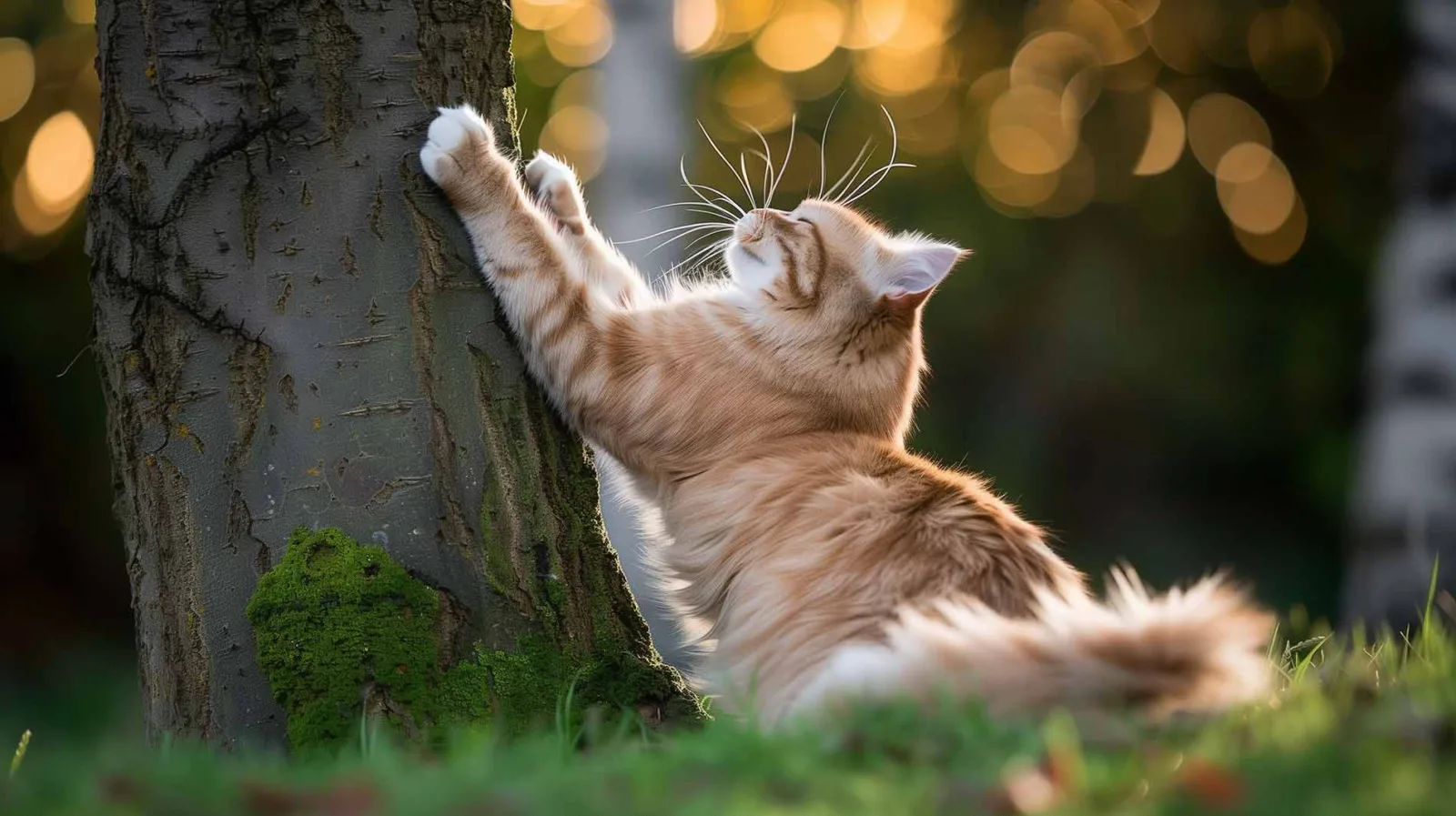
Scent Glands
How cats leave their scent
Scent glands located within the pads of cat paws play a subtle yet vital role in feline communication. These glands secrete pheromones that are unique to each cat, allowing them to mark their territory and leave a personal signature wherever they roam.
Why cats leave their scent in their territory
The markings left by these scent glands serve as a means of non-verbal communication among cats, conveying messages related to territorial boundaries, reproductive status, and individual identity. This olfactory signaling is fundamental to the social dynamics of feline communities, helping to prevent conflicts and facilitate mating behaviors.
We hope this article about the anatomy of cat paws answered some of your questions. If you have any, leave them down below in the comments!

